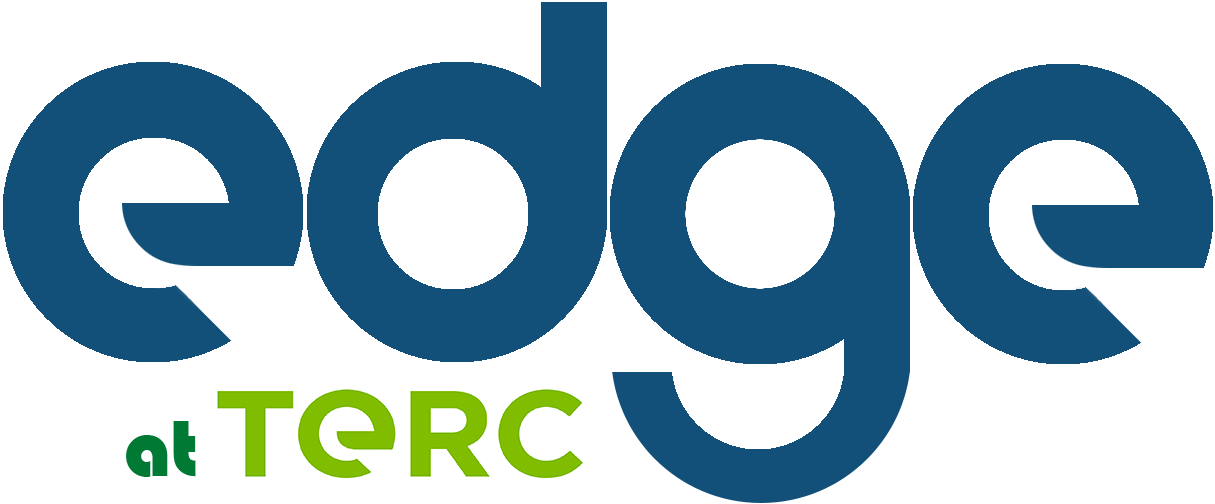Arcadia: The Next Generation
In 2010, EdGE was funded to explore how to build infrastructure where teachers and learners could access students’ game-based learning (GBL) data to measure learning. We designed and tested several types of teacher dashboards and explored the limitations of GBL in the classroom.
CodePlay
Jodi Asbell-Clarke, Elizabeth Rowe
The shared purpose of CodePlay, an NSF funded partnership program between EdGE and Braintree Public Schools was to build a solid foundation for teaching and learning of computational thinking (CT) in upper elementary and middle schools, and in doing so, inform a scalable and generalizable model of personalized CT education for a broad audience of neurodiverse learners.
Executive Function + STEM
Teon Edwards
This cross-TERC funded initiative looked closely at the intersection of EF + STEM. Why? Because EF (Executive Function, the attention-regulation processes involved in goal-directed problem solving) is a critical foundation for engagement in STEM, and STEM has the potential to benefit children’s EF development. It looked at EF+STEM through the lenses of both neurodiversity and social equity.
FUN: Finnish-US Network
Jodi Asbell-Clarke
The Finnish-US Network (FUN) blended programs, games, research methods, and more from Finland and the USA to gain a broader picture of how engagement and learning are entwined in the growing field of game-based learning. The major research question asked, to what degree learners in the two cultures respond similarly or differently to STEM learning games. The FUN collaborators focused on several aspects of game-based learning including the relationship between learner perceptions of flow and game engagement.
Including Neurodiversity in Foundational and Applied Computational Thinking (INFACT)
Jodi Asbell-Clarke
INFACT is an inclusive teaching and learning program for Computational Thinking (CT) in grades 3-8. It offers activities, games, interactives, and other materials (digital and unplugged) for teaching CT, with supports for executive function skills. Research on INFACT showed that students in grades 3-5 who used INFACT materials improved more in CT problem solving practices than students in comparison classes using other CT programs. Students who showed the most dramatic improvement were those in the lowest quartile of EF scores on external assessments.
Leveling Up
Jodi Asbell-Clarke, Teon Edwards, Jamie Larsen, Elizabeth Rowe
Through NSF-funded Leveling Up, EdGE designed a series of fun-to-play, publicly available mobile and browser-based games that support and measure standards-based high school science concepts. The play mechanics in the Leveling Up games are tightly tied to the related content, Newton’s first and second laws of motion, optics including light reflection and refraction, and bird flight.
Martian Boneyards
Jodi Asbell-Clarke, Teon Edwards, Jamie Larsen
EdGE launched its first game, Martian Boneyards, in 2010. Set in an HD virtual world called Blue Mars, Martian Boneyards engaged players in scientific inquiry as part of the mystery of an abandoned science center… surrounded by scattered bones.
May’s Journey
Elizabeth Rowe
Created with funding from NSF, May’s Journey is a 3D puzzle-based game which uses game design mechanics as metaphors to enhance learning of introductory programming concepts.
Revealing the Invisible
New technologies (including biometry and neuro-imaging) provide new opportunities to unobtrusively measure student engagement and learning in digital learning environments. Revealing the Invisible — developed through the NSF Ideas Lab on Data-Intensive Research to Improve Teaching and Learning October 2014—utilized these technologies to provide foundational knowledge of the ways in which measures of implicit learning might be linked to explicit learning to develop educationally relevant games that are adaptive to diverse learners.
SportsLab
Jamie Larsen
SportsLab inspired sports-minded (and other) kids to get excited about STEM. SportsLab takes place in a collaborative, game-like interactive, online environment, supported by hands-on activities in the real world. Using avatars, teams explore a digital world, experience a narrative story, interact with in-game characters, and access various tools and resources through a series of milestones and missions to help them design a new Parkour shoe to enter in a design competition.
STEMlandia
Jamie Larsen
STEMlandia tapped into the power of the Lab Cache Geocaching Adventure experience to reveal a world of nature and education. STEMLandia challenged geocachers to find 10 creatively hidden lab caches. Geocachers explored the Arboretum grounds using Science, Technology, Engineering and Math (STEM) skills to unlock the finds.
StoryMaker
Tara Robillard
PBS NewsHour’s Student Reporting Labs (SRL) developed an online curriculum delivery platform to supply in-demand interdisciplinary, multimodal, STEM-infused teaching and learning tools to classrooms across the country. StoryMaker aims to produce unique STEM stories from a teen perspective, partnering with local public media stations to provide mentorship and amplify the voices of young people. EdGE is the evaluator for the project.
Zoombinis Implementation Project
Jodi Asbell-Clarke, Elizabeth Rowe
Framed in early research about data literacy, Zoombinis has been studied nationally to support and measure computational thinking with thousands of students in grades 3-8. When teachers use Zoombinis in class, along with the accompanying Zoombinis curriculum activities, their students Computational Thinking was improved. There was found to be strong performance by neurodiverse learners, such as those with ADD, autism, and dyslexia and a strong overlap with executive function (EF) strategies, such as breaking big problems into smaller, manageable ones; and organizing information to recognize salient trends and patterns to establish helpful routines.
